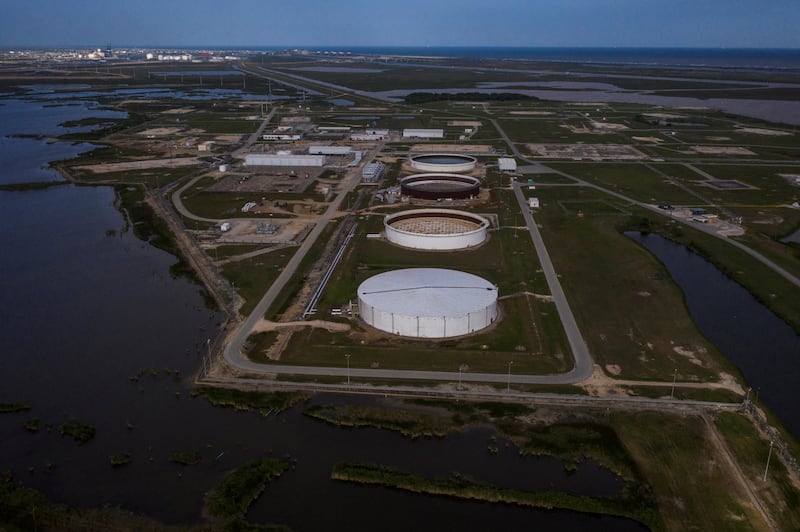Oil prices slid about 4 per cent on Monday to remain below $100 a barrel as demand concerns grow amid continuing Covid-19 lockdowns in China, the world’s largest importer of oil, and supply fears eased after the International Energy Agency and the US announced the release of additional emergency reserves.
Brent, the global benchmark for two thirds of the world's oil, was trading 4.17 per cent lower at $98.49 a barrel at 8.15pm UAE time. West Texas Intermediate, the gauge that tracks US crude, was down 4.08 per cent to $94.25 a barrel.
Oil prices have retreated from 14-year highs in mid-March after the US banned Russian energy imports and the UK said it would phase out its purchase of Moscow's oil in retaliation for Russia's military offensive in Ukraine. Prices, which nearly touched $140 per barrel, are still up roughly 26 per cent since the beginning of this year.
"Oil is off around 3 per cent on the day, with Brent back below $100 and hitting its lowest level in almost four weeks," said Craig Erlam, senior market analyst at Oanda.
"There has been a big effort to alleviate the pressures in the oil market in recent weeks which has no doubt helped, but it's the lockdowns in China that are driving the latest declines. The country's zero-Covid policy is naturally having a dampening effect on demand, which is aiding the rebalancing efforts.
"This is just a temporary demand hit so the upside risks to the price remain but it is offering some reprieve for now. How widespread the restrictions become and for how long will determine the sustainability and severity of the declines," he said.
China is experiencing a wave of Covid-19 infections and has implemented strict lockdowns in Shanghai, raising fears about waning consumption that is weighing on oil prices.
The Opec warned on Monday that the current geopolitical developments in Europe, coupled with the pandemic, have created an "extremely volatile market" and that these "non-fundamental factors" are beyond its control.
“What we can do is what we have always done — and that is to continue collaborating with our non-Opec partners in the Declaration of Co-operation [Opec+ alliance] to help support market stability and economic growth through our joint decisions”, Mohammad Barkindo, Opec's secretary general, said on Monday after a joint meeting with the EU.
The Opec+ alliance will add another 432,000 barrels per day of crude to the market in May, staying the course of incremental increases in global oil supply, it confirmed on March 31.
The 23-member super group of producers, led by Saudi Arabia and Russia, has signalled its unwillingness to let global geopolitics dictate its output policies and undermine efforts to stabilise a volatile crude market.
Meanwhile, the IEA's 33 member countries have pledged to release 120 million barrels of oil from their emergency reserves, including half from the US and half from other members including Europe, Japan and Australia.
This is on top of the 120 million barrels the US plans to release from its Strategic Petroleum Reserve, which will bring total additional supply to the market to 240 million barrels worldwide.
“The release of strategic government oil reserves should ease some market tightness over the coming months, reducing the need for oil prices to rise to trigger near-term demand destruction,” Giovanni Staunovo, commodity strategist at UBS, said on Monday.
The Swiss investment bank UBS also lowered its June Brent forecast by $10 to $115 a barrel.
But the release of the reserves will not fix the "structural imbalance resulting from years of underinvestment" in the oil industry as demand for crude continues to pick up in the global economic recovery, Mr Staunovo said.
Mr Barkindo also stressed that adequate industry investment was required to help meet future demand.
"Stable energy markets and security of supply are essential for the realisation of the energy transition," he said.
While oil prices could touch the $90 per barrel mark, the long-term outlook remains unchanged, said Ipek Ozkardeskaya, senior analyst at Swissquote.
“The stronger negative momentum could encourage a further slide toward the $88/$90 area. However, the risk of a sudden jump remains high — approaching the $90 mark, as the slowdown in Chinese demand and the release of US strategic reserves are short-term factors that won’t reverse the worry of a tight supply and rising long-term demand trend,” she said.






